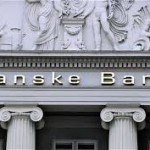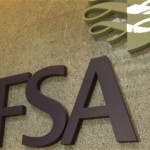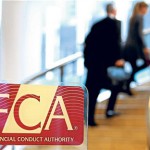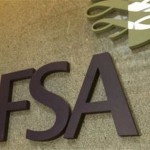Danske Defeat on Risk Weights Shows Regulatory Supremacy
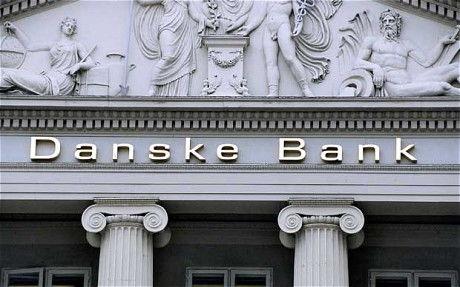
As regulators across Europe and the U.S. show signs of caving in to bank industry warnings that new rules risk hurting the economy, Denmark’s watchdog has just won a milestone battle against the nation’s biggest bank.
Danske Bank A/S (DANSKE), whose assets are equivalent to more than 180 percent of Denmark’s gross domestic product, abandoned its efforts to fight an order by the Financial Supervisory Authority to increase its risk-weighted assets by at least 10 percentage points. The bank’s argument that its internal ratings-based approach correctly measured risk was rejected by the FSA, which tested the model’s results against other banks. The order raised Danske’s capital need by $1.1 billion, the bank said.
“The bottom line is that this benchmarking exercise in modeling has been affirmed,” Christian Hede, a Copenhagen-based analyst at Nordea Bank AB, said by phone.
Danske Chief Executive Officer Thomas Borgen has pledged to make more efficient use of the bank’s capital. While head of corporate and institutional banking, Borgen said at a November 2012 capital markets day that he planned to raise income by jettisoning clients and products that are a drain on capital. The measures form part of a strategy targeting a higher return on equity as Danske struggles to compete with Sweden’s biggest banks.
‘No Chance’
“The FSA was saying they’ve had too low risk weights on corporate lending,” Hede said. “Danske had a slim-to-no-chance of winning, but if they had won, it would have meant a huge boost to their return on equity.”
Danske’s return of 5.9 percent is almost one-third of highest ranked DNB ASA (DNB), according to data compiled by Bloomberg. The Oslo-based lender has an ROE of 14.3 percent, followed by Svenska Handelsbanken AB (SHBA), in Stockholm, with 14.2 percent.
It’s not the first time Denmark’s regulator has shown it can be tougher on banks than its counterparts elsewhere. Denmark was the first nation in the European Union to force senior bank creditors to share losses after passing bail-in legislation in 2010. During the height of Denmark’s financial crisis, the FSA also made stealth visits to ailing banks, often shutting them down within hours of knocking on the door.
Danske said last week the FSA’s order raises the bank’s total capital requirement by 6 billion kroner ($1.1 billion) to 87 billion kroner. Regulators are focusing on risk weighting models to ensure lenders don’t water down capital requirements.
An ‘Understanding’
Danske decided to drop its appeal, raised when the FSA’s order was announced a year ago, after coming to an “understanding” with the regulator, Henrik Ramlau-Hansen, chief financial officer, said in a phone interview.
“We have had a good dialog with the FSA on how to deal with benchmarking — and how not to deal with benchmarking — and will be talking with the FSA in the future on IRB modeling,” he said. “It can be part of the work but it cannot stand alone. You have to talk to the companies, look at their portfolios and customers.”
The 10 percentage point increase raised the amount of corporate risk-weighted assets to 310 billion kroner from 235 billion kroner, Ramlau-Hansen said.
“They didn’t have much choice,” Hede said. “If it’s a question of interpretation of laws and rules, and if you want to battle someone over interpretation, it shouldn’t be the FSA because by definition their interpretation is the correct one.”
Timing Risk
Danske had faced the prospect of a 13 percentage point increase in its corporate risk weights. The FSA’s original order was based on Danske’s balance sheet as of December 2012, when the risk weighting was 36 percent. Six months later, when the agency gave the order, Danske’s efforts to remove risk in its corporate portfolio had helped it lower that figure to 30 percent.
That means the bank only needs to add 75 billion kroner to its risk-weighted assets, versus the 100 billion kroner announced last year and that the bank had provisionally accounted for, Ramlau-Hansen said.
As a result, Danske’s common equity Tier 1 capital ratio will rise by about 0.4 percentage points, Danske said. The ratio was 14 percent at the end of the first quarter.
Swedbank AB will have a ratio of about 21.7 percent after getting Swedish regulators’ approval this month to used an advanced internal ratings based approach similar to Danske’s. The change means Swedbank will overtake Handelsbanken as Europe’s best capitalized major lender. Handelsbanken reported a ratio of 19.5 percent at the end of the first quarter.
Danske probably will have to go back to the markets if it hopes to close the gap, particularly since it wants to improve its credit rating, saidAndreas Hakansson, a Stockholm-based bank analyst for Exane BNP Paribas. “They’re going to continue to have to build capital for quite some time,” he said.
Sources: bloomberg









